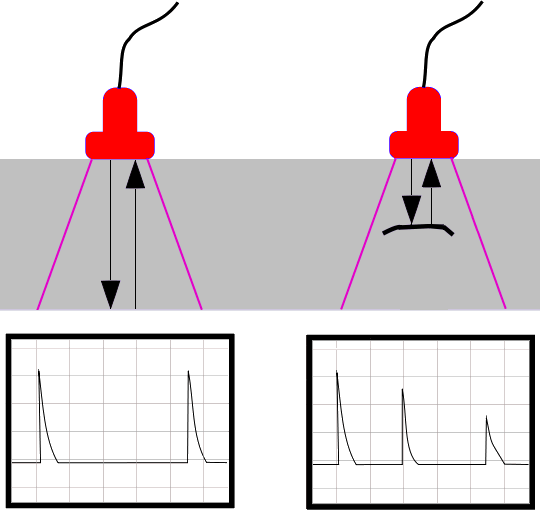What is Ultrasonic Testing?
Ultrasonic nondestructive testing, also known as ultrasonic NDT or simply UT, is a method of characterizing the thickness or internal structure of a test piece through the use of high frequency sound waves. The frequencies, or pitch, used for ultrasonic testing are many times higher than the limit of human hearing, most commonly in the range from 500 KHz to 20 MHz.
What sort of materials can be tested?
In industrial applications, ultrasonic testing is widely used on metals, plastics, composites, and ceramics. The only common engineering materials that are not suitable for ultrasonic testing with conventional equipment are wood and paper products. Ultrasonic technology is also widely used in the biomedical field for diagnostic imaging and medical research.

Principle of ultrasonic testing.
LEFT: A probe sends a sound wave into a test material. There are two indications, one from the initial pulse of the probe, and the second due to the back wall echo.
RIGHT: A defect creates a third indication and simultaneously reduces the amplitude of the back wall indication.
-
 Sales@hata-ndt.com
Sales@hata-ndt.com -
 0086-0371-86172891
0086-0371-86172891










